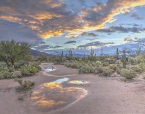Top 10 Natural Wonders: A Stunning Journey

Embark on a Journey to the Top 10 Greatest Natural Wonders of the World
As a passionate traveler and adventurer, I’ve been fortunate enough to witness some of the most breathtaking natural wonders on Earth. Today, I’m thrilled to share my top 10 picks for the greatest natural wonders in the world. I hope this list inspires you to explore new destinations and try new travel experiences, while also providing you with practical advice and insights to help you plan your trip.
10. Witness the Magical Northern Lights
The Northern Lights, or Aurora Borealis, are a stunning natural phenomenon visible from various locations around the world. If you’re in the Southern Hemisphere, you can also enjoy the Southern Lights, or Aurora Australis. The most famous places to see the lights are in the Arctic Circle areas of Norway, Sweden, and Finland, but they’re also visible from parts of Scotland, Canada, and Russia. The auroras occur when plasma ejected from the sun interacts with Earth’s atmosphere, creating a mesmerizing light show. Best seen during winter months, this celestial spectacle is one you definitely won’t want to miss.
9. Pamukkale’s Surreal White Terraces in Turkey
Located in Western Turkey, Pamukkale’s stunning landscape was created by natural thermal springs over thousands of years. The terraces are made from debris left by the springs, forming calcium crystals. The therapeutic waters at Pamukkale are famous for their healing properties. While not every pool is accessible for swimming, many are. Visiting Pamukkale’s pools will make you feel as though you’re surrounded by ice in a surreal experience, even in Turkey’s warm climate.
8. Explore the Mysterious Beauty of Antarctica
Antarctica, the world’s largest desert, is a continent full of mysteries and awe-inspiring landscapes. Despite its barren appearance, Antarctica is home to incredible wildlife, including emperor penguins, the largest species of penguin. In addition to its vast ice fields and mountains, Antarctica boasts volcanoes and the famous Blood Falls, a copper-red frozen waterfall teeming with unearthly algae. While reaching Antarctica can be challenging, its otherworldly beauty makes it well worth the effort.
7. Journey Through China’s First National Park: Zhangjiajie
Characterized by its towering and slender mountains draped in tropical foliage, Zhangjiajie National Park in China is an area of immense natural beauty. These mountainous pillars have been marveled upon for thousands of years and are an integral part of Chinese culture. There are plenty of ways to explore Zhangjiajie, including the world’s tallest outdoor elevator and the highest glass bridge of its kind. The park offers breathtaking bird’s-eye views of the spectacular landscape.
6. Discover the Depths of Lake Baikal, Russia
Lake Baikal, the world’s oldest and deepest lake, is a rift lake formed by tectonic plates pulling apart. Over 5,000 feet deep and containing a fifth of all the fresh water on Earth, Lake Baikal is an extraordinary natural wonder. Visiting during winter allows you to witness the lake’s frozen beauty, with ice sturdy enough to walk or skate across. Although venturing to Siberia in winter isn’t for the faint of heart, you won’t regret experiencing the magnificence of Lake Baikal.
5. Dive into the Wonders of Australia’s Great Barrier Reef
The largest coral reef system in the world, the Great Barrier Reef, is a vibrant underwater ecosystem teeming with exotic species such as mantis shrimps, humpback whales, humpback
dolphins, clownfish, and sea turtles. Covering an area equivalent to 70 million soccer fields, the Great Barrier Reef is even visible from outer space. Sadly, pollution threatens the reef, with significant portions of coral dying each year. Conservation-minded tourists can visit and go scuba diving to appreciate the corals and marine life while supporting preservation efforts.
4. Witness the Birth of a Volcano: Paricutin, Mexico
In February 1943, a farmer in Mexico experienced the shock of his life when a volcano began to erupt and rise from the ground in his field. The village of Paricutin was destroyed, and within five years, the volcano reached a height similar to the Empire State Building. Paricutin’s unique and dramatic eruption makes it a standout among the world’s natural wonders. Today, the volcano has largely ceased to be disruptive and has become a popular tourist attraction in Mexico.
3. Marvel at the Grand Canyon’s Geological Wonders in Arizona
The Grand Canyon, one of the United States’ most incredible natural landmarks, stretches for miles through Arizona, carved over millions of years by the Colorado River. Each year, millions of people visit the American Southwest to explore the canyon, which is nearly 280 miles long and a mile deep in some areas. The Grand Canyon is a treasure trove of fossils and geological history, with layers of rock revealing the region’s past. This breathtaking site holds deep spiritual significance for many Native Americans.
2. Conquer the Summit of Mount Everest
Mount Everest, the highest mountain on Earth, stands tall at 29,000 feet above Nepal and China. The jewel of the Himalayas, Everest is stunning from any vantage point, whether standing at the summit, flying overhead, or gazing up from base camp. Although climbing Everest is a dangerous endeavor that has claimed hundreds of lives, its beauty can still be appreciated even if you’re not able to attempt the feat yourself. Everest is also home to the indigenous Sherpa people, whose culture is deeply intertwined with the mountain.
1. Experience the Majesty of Victoria Falls, Zambia, and Zimbabwe
Straddling the border between Zambia and Zimbabwe, Victoria Falls is considered the largest waterfall in the world. With a width of 5,000 feet and a height of over 350 feet at its tallest point, Victoria Falls dwarfs Niagara Falls. One of its most famous features is the Devil’s Pool, a rock pool at the edge of the waterfall’s plateau, safe from the river current and allowing swimmers to experience the waterfall up close. While caution is necessary, this once-in-a-lifetime opportunity will leave you with unforgettable memories.
Conclusion
As we reach the end of our journey through the top 10 greatest natural wonders of the world, it’s impossible not to feel a sense of awe and wonder at the sheer beauty and diversity of our planet. These extraordinary places not only offer breathtaking sights and unique experiences but also serve as a reminder of the importance of preserving and protecting the environment for future generations to enjoy.
From the ethereal Northern Lights dancing across the sky to the dramatic birth of a volcano in Mexico, each of these natural wonders provides an opportunity to connect with nature, delve into the mysteries of our world, and gain a deeper appreciation for the delicate balance of ecosystems. Whether you’re conquering the summit of Mount Everest or marveling at the geological history revealed in the layers of the Grand Canyon, the experiences these destinations offer are truly unparalleled.
As you embark on your own adventures, remember that each of these wonders has its own unique story and cultural significance. By immersing yourself in local customs, learning about indigenous peoples, and engaging in sustainable tourism practices, you can contribute to the conservation and preservation of these incredible places. Furthermore, these unforgettable experiences will not only broaden your horizons but also inspire you to continue exploring the wonders of our remarkable world.
So, pack your bags, put on your adventure hat, and let the beauty and majesty of these natural wonders spark your . Venture forth and create memories that will last a lifetime, while also becoming a steward for our planet’s irreplaceable treasures. Happy travels!
What is the best time to visit the Northern Lights?
The ideal time to see the Northern Lights is during the winter months, typically between November and February, when the nights are longest and the skies are darkest. However, aurora sightings can be unpredictable and are subject to weather conditions, so it’s best to plan a trip that spans several days to increase your chances of witnessing the phenomenon.
Are there any safety concerns when visiting Pamukkale’s thermal pools?
While many of Pamukkale’s thermal pools are open for swimming, some are off-limits due to safety or preservation concerns. It’s important to follow posted signs and guidelines, wear appropriate footwear to avoid slipping on the calcium deposits, and be mindful of your surroundings to ensure a safe and enjoyable experience.
How can I visit Antarctica responsibly and minimize my environmental impact?
When planning a trip to Antarctica, it’s crucial to choose a reputable tour operator that adheres to strict environmental guidelines and sustainable tourism practices. While on the continent, follow Leave No Trace principles, respect wildlife and their habitats, and participate in educational programs to better understand the fragile ecosystem and the importance of conservation efforts.
What activities are available for visitors at Zhangjiajie National Forest Park?
Zhangjiajie National Forest Park offers a wide range of activities for visitors, including hiking trails, scenic viewpoints, and the world’s tallest outdoor elevator, the Bailong Elevator. The park also features the impressive Zhangjiajie Glass Bridge, the highest of its kind, providing a thrilling bird’s-eye view of the unique landscape.
How can tourists help protect the Great Barrier Reef during their visit?
Tourists can contribute to the protection of the Great Barrier Reef by engaging in responsible tourism practices, such as choosing eco-friendly tour operators, adhering to designated swimming and diving areas, avoiding touching or standing on coral, and disposing of waste properly. Additionally, supporting local conservation initiatives and educating oneself on the threats facing the reef can help raise awareness and promote long-term preservation efforts.







